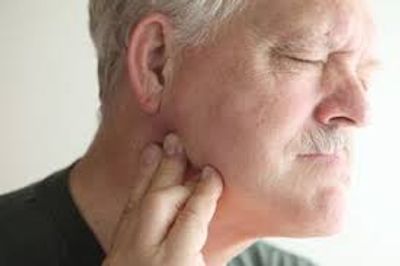Temporomandibular Joint Disorder (TMJD)/Chewing Dysfunction
How can Myofunctional Therapy Help?
Understanding the Role of Myofunctional Therapy in Jaw Pain Relief and Function Restoration
Temporomandibular Joint (TMJ) disorders are a common source of orofacial pain in both adults and children. The TMJ is the complex hinge joint that connects the lower jaw (mandible) to the skull (temporal bone), enabling essential functions such as chewing, speaking, and swallowing.
When the TMJ or its supporting structures—bone, cartilage, muscles, and nerves—are impaired, the condition is broadly classified as a Temporomandibular Disorder (TMD). These disorders can be acute or chronic and may result from structural abnormalities, muscular imbalances, trauma, or functional habits that place excessive strain on the joint.
How TMD Develops
TMD is often considered a repetitive strain or motion disorder. Over time, dysfunctional jaw movement patterns and muscular imbalances can break down joint integrity and lead to inflammation, pain, and restricted mobility.
The jaw’s stability depends on a delicate balance of muscle tone, joint alignment, and functional coordination. Any disruption—whether due to posture, airway compromise, oral habits, or stress-induced clenching—can result in TMJ dysfunction.
Common Signs and Symptoms of TMJ Disorders
Patients with TMD may present with:
- Jaw pain or tenderness (one or both sides)
- Pain in or around the TMJ itself
- Ear pain, fullness, or pressure without infection
- Loss of hearing or sensation of loss of hearing
- Difficulty chewing or pain during chewing
- Aching facial muscles
- Jaw locking (inability to fully open or close)
- Jaw clenching or tightness
- Bruxism (nighttime or daytime teeth grinding)
- Audible jaw clicking or popping
- Headaches or facial tension
Symptoms can range from mild discomfort to severe, daily pain that affects eating, speaking, and quality of life.
TMJ Disorders and Myofunctional Dysfunction
The relationship between TMD and orofacial myofunctional disorders (OMDs) is well established.
A landmark study by Ferreira, Da Silva, & de Felicio (2009) found that 97.92% of individuals with TMD had measurable orofacial myofunctional variables—meaning the vast majority of TMJ patients also present with tongue posture, swallowing, or breathing dysfunctions.
How OMDs Contribute to TMJ Disorders
- Improper tongue posture can increase mandibular instability and strain masticatory muscles.
- Mouth breathing can alter head posture, overloading the jaw joint.
- Tongue thrust swallowing patterns create repeated abnormal forces on the TMJ.
- Parafunctional habits (cheek biting, lip chewing, nail biting) compound joint stress.
Interdisciplinary Care for TMD
TMJ disorders are complex and often require collaboration between multiple specialists, including:
- Primary care physicians
- Dentists / orthodontists
- Speech Pathologists (SLP) Specializing in Orofacial Myofunctional Therapy or Orofacial Myology
- ENTs
- Chiropractors
- Oral and maxillofacial surgeons
- Physical therapists
This team-based approach ensures that structural, muscular, and functional issues are addressed comprehensively.
Myofunctional Therapy for TMJ Disorders
Orofacial Myofunctional Therapy (OMT) is one of the least invasive, most cost-effective, and clinically effective treatment options for TMJ dysfunction when orofacial muscle imbalance is a contributing factor.
OMT targets the root causes of functional strain on the TMJ by:
- Strengthening and balancing the tongue, lips, and facial muscles
- Restoring correct oral rest posture (lips closed, tongue on palate, nasal breathing)
- Eliminating dysfunctional swallowing patterns (tongue thrust)
- Promoting nasal breathing to reduce forward head posture and muscular overcompensation
Clinical Outcomes of Myofunctional Therapy in TMJ Management
When used as part of a comprehensive treatment plan, myofunctional therapy can:
- Reduce TMJ pain and muscle tension
- Increase mandibular mobility
- Improve jaw alignment and movement patterns
- Minimize or eliminate joint sounds (clicking/popping) caused by muscular imbalance
- Decrease the frequency and intensity of TMD flare-ups
By correcting the underlying muscle function, OMT not only alleviates symptoms but can help prevent recurrence—leading to improved long-term joint health and quality of life.
Key Takeaway:
TMJ disorders are rarely just “jaw problems”—they are often linked to broader patterns of orofacial muscle dysfunction, posture, and breathing. Addressing these factors through myofunctional therapy offers a sustainable, non-invasive solution that supports both symptom relief and long-term prevention.
If you are experiencing discomfort or dysfunction of the TMJ, reach out to us today to see if a myofunctional evaluation is appropriate for you!
Copyright © 2025 Myofunctional Spot - All Rights Reserved.
- Home
- About
- Tongue Tie
- Pre/Post Frenectomy
- Tongue Thrust/Swallow
- Early Feeding Skills
- Mouth Breathing/Oral Rest
- Sleep Apnea/Snoring
- Myofunctional Issues 1-5+
- Eliminate Oral Habits
- Lip Incompetence
- Lactation Support
- Bottle Feeding
- TMJD/Chewing Dysfunction
- Voice Therapy/Tongue Tie
- Fluency/Stuttering
- Severe Reflux
- Candidate?
- Assessment
- Myo Screening Clinics
- Treatment Areas (0-99 yr)
- MyoSpot Plans & Pricing
- Treatment Process
- BabyMyo Infant Feeding
- Baby Frenectomy Support
- BabyMyo To Go (0-12 mos)
- TinyMyo (ages 1-4)
- TinyMyo To Go (ages 1-4)
- MyoToGo (ages 5-99+)
- Lactation Spot
- Speech Language Spot
- FAQ
- Policies & Disclaimers
- Physicians
- Privacy Statement
- Terms and Conditions
- Medical Disclaimer
- Forms
- Contact
- Join our Team!
- Upcoming Events
This website uses cookies.
We use cookies to analyze website traffic and optimize your website experience. By accepting our use of cookies, your data will be aggregated with all other user data.
